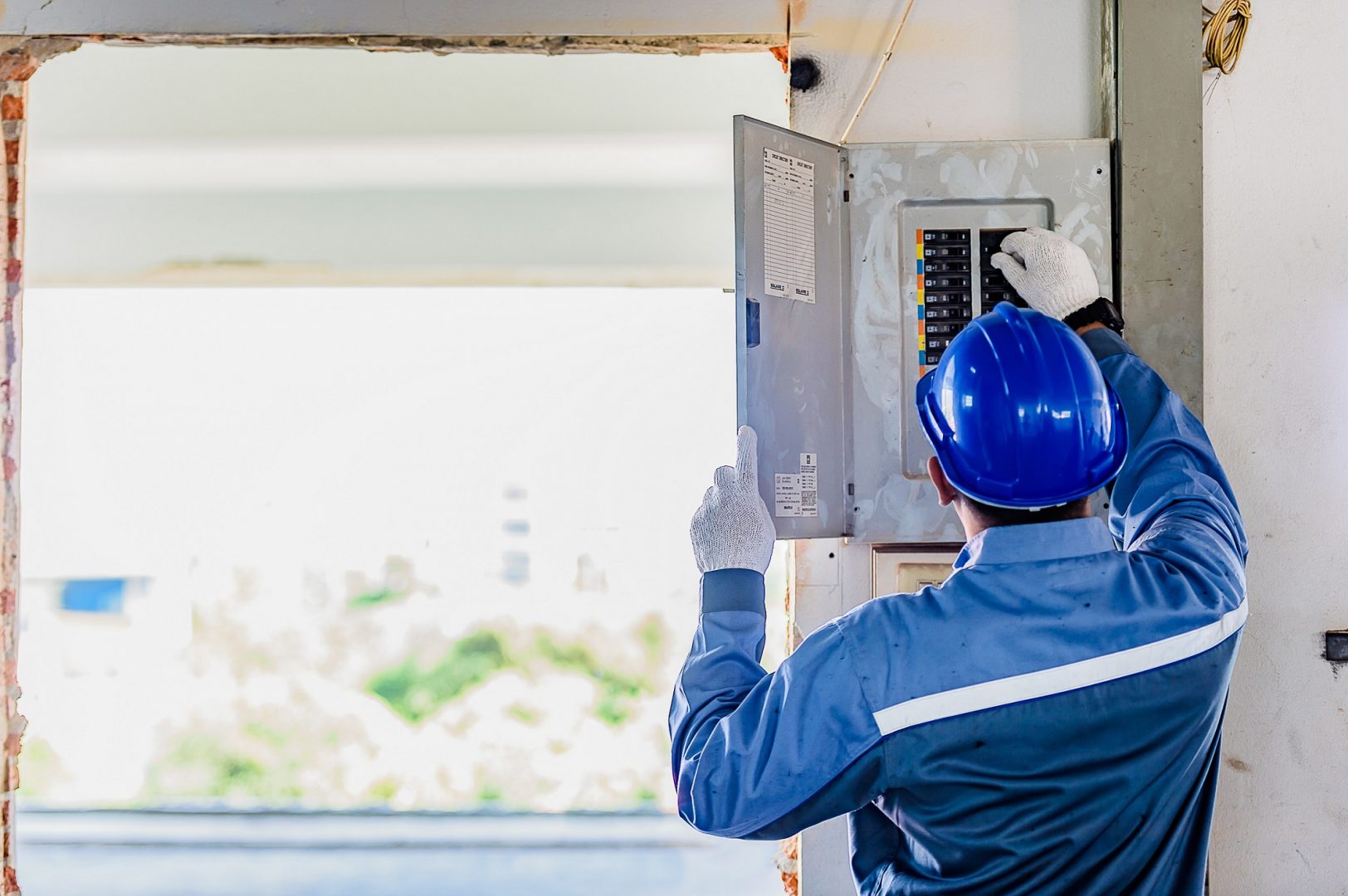How can investors innovate for impact without sacrificing rigour?
Read the original version of this article on the Impact Alpha website.
As institutions from Prudential Financial to family office Ceniarth LLC will testify, there are some impact opportunities that fit easily within commercial investment portfolios. Others – often those responding to persistent market failures or emergent trends – offer less precedent and require more flexibility (or a higher risk appetite).
How do you maintain investment standards and discipline when pushing the boundaries for impact, often into riskier territory? For 70 years, CDC has invested for economic development. More recently, spurred by the urgency of the world’s critical challenges and global momentum towards the Sustainable Development Goals, we asked ourselves: how could we make our money work even harder for impact?
We partnered with the UK Government, our sole shareholder, to design a new capital commitment with greater risk-return flexibility. Today, we have commitments and pipeline of over $500 million through 2019, and up to $1.5 billion of capital to put to work from 2020.
We manage this capital through a set of unique Catalyst Strategies, investment strategies designed to shape nascent markets and build more inclusive and sustainable economies. This has allowed us to innovate investment opportunities where pioneering impact calls for more flexibility around risk, an approach increasingly recognised in the impact investing field as a ‘catalytic capital’ approach.
MedAccess, for example, is a start-up subsidiary of CDC established as a Catalyst Strategy in 2017. The strategy was created to use financial instruments (such as volume guarantees) to make essential medicines more accessible in poorer countries. The first guarantee enabled challenger medical manufacturer Hologic to ramp up volumes and reduce prices for viral-load diagnostic testing systems, a technology critical to the lives of people living with HIV.
MedAccess is increasing patient access to life-changing medical supplies.
The result is up to 50% lower prices in up to 48 of the world’s poorest countries, which could save public sector purchasers up to $50 million over the next four years and beyond. Ten countries in sub-Saharan Africa are expected to introduce this technology by the end of 2019.
Remarkably, this deal has also begun to reshape the way this approximately $400 million market works. The ‘all-in’ pricing model pioneered by the deal has now brought transparency to previously opaque pricing and been replicated in a tender from one of the world’s largest buyers, moving the market. These changes in the market are expected to continue into the future beyond the expiry of the guarantee, leaving a legacy for years to come.
The flexible risk appetite with which we make Catalyst investments has allowed us to test this groundbreaking model and catalyse life-changing market improvements. But this new approach has also raised many questions. How do we define what a ‘good’ Catalyst investment is, in a way that avoids us merely going after bad investments? What types of risk are we willing to take, and which will never be in scope? How do we enable and incentivise teams to innovate new strategies given the time they take to germinate? And how do we organize ourselves effectively to work in new ways, while leveraging existing strengths? Here are some early learnings.
Poa provides low cost internet to individuals and small businesses in low-income neighborhoods in East Africa
Establish guide rails based on impact ambition. Adding a pool of more flexible capital into any investing organisation is fraught with danger. It could erode high standards of investment rigour and become a place to park bad deals. Avoiding this requires a clear articulation of the ambitious impact goals that our flexible capital should deliver, and the markers by which we would judge success over time.
Our Catalyst Strategies respond to persistent market failures, support nascent markets and prove out new solutions. These opportunities can arise where emerging technologies are not yet valued, first-mover disadvantages burden pioneer companies, or collective action problems require coordinated investment across multiple actors before economies of scale can be reached. This is precisely where our higher risk appetite can support markets, before commercial capital kicks in.
While we think the impact of being an early investor in these kinds of markets is worth the higher risk we take, the ‘graduation’ of these markets to commercial capital is also one of our markers of success. Setting realistic goals for the timing of that graduation is also critical: for Hologic, it took place within a year but our fund investments in Myanmar will likely need catalytic capital for years to come.
Putting a time-bounded expectation on the use of this catalytic capital also means we should always see a path to commercial sustainability at the time of investment and will look to limit further investment or exit if this is not on track over time.
Evolve a different approach to risk. The rigor in our approach is anchored not around target return, but around risk. While we may still find high-performing investments in the Catalyst portfolio, they typically lack precedent benchmarks by which we can reliably assess expected return at the time of investment. In response, our investment committees increasingly talk through scenarios and allow for less certainty on the base case.
In newer sectors, we have also encountered new types of risk. We have found ourselves assessing the ethics of data collection and use across the portfolio as the presence of technology in our investee companies increases. Investments in primary agriculture, for example, are particularly exposed to climate risk. We build expertise in these new (often non-financial) risks as the portfolio grows, and benefit from developing early insight into topics that will no doubt demand growing focus from risk management in the future.
Our greater risk appetite can also translate into flexibility in structuring investment terms. For example, our Energy Access and Efficiency strategy has a mandate to lend, un-hedged, in local currency to help solar pay-as-you-go companies that are on-lending to households in Africa minimise the currency risk between their assets and liabilities. That said, we approach these negotiations with caution, rigour and sensitivity to minimise the risk of market distortion – in this case, pricing in line with benchmark lending rates used by local banks.
Gridworks is a developer and investor in transmission, distribution and off-grid electricity is aiming to improve power infrastructure in Africa
Plan to invest our hidden resource: time. Beyond our flexible capital, we also commit to spending time to find, assess, structure, negotiate and manage deals for more ambitious impact. This higher transaction cost is a conscious choice, given that Catalyst is mandated to invest into businesses proving new models, or operating in challenging contexts.
Another start-up subsidiary Catalyst Strategy is Gridworks, a developer and investor in transmission, distribution and off-grid electricity is aiming to improve power infrastructure in Africa. There is a growing need for private capital in this sector, but there is currently little appetite from investors to carry out the early stage development work necessary to create commercially viable opportunities. Gridworks is designed to do just this.
Gridworks is also mandated to accept a degree of risk associated with unproven operating models and difficult untested business environments. In each case, patience and tenacity may be required across many years before a sustainable business is created and demonstrated. Success in this sector can however lead to transformative outcomes, increasing quantity and quality of electricity for the long-term benefit of large populations.
For CDC, this type of ‘development risk’ is just the kind of risk that Catalyst Strategies can absorb and exemplifies our appetite to consider time as a resource we commit just like money.
This approach distinguishes us from many investors. Setting the right incentives to support the team over time is crucial, including building in learning mechanisms to signal when it’s time to pivot. Getting this wrong could have serious repercussions, from difficulties deploying capital, to a drift away from intended strategy and goals and, ultimately, failure to deliver the impact we hope to achieve. We have learned that we need to be just as rigorous in our use of time as money.
Preserve a ‘sandbox’ for strategic opportunities. Even as we have launched specialist strategies like MedAccess and Gridworks, we have maintained two generalist strategies, The Accelerator and Catalyst Funds, for direct and intermediated investments, respectively. These strategies are guided by the impact objectives of enhancing inclusion, promoting innovation or reaching deeper into frontier markets. They are not constrained by a sector-specific mandate, which has made them a valuable ‘sandbox’ in which to explore new pathways for market-shaping impact. We maintain our rigor while allowing this exploration by setting a high bar on direct impact for each investment, which is why the orientation around the three impact objectives listed above has proven a useful framing for the strategy.
MedAccess has signed an agreement to reduce the price of 35 million next generation bednets, accelerating access to a new and innovative mosquito-control technology
For example, our investment into Energy Access Ventures through Catalyst Funds led us to recognise the need for local-currency debt in the African market for solar home systems. This is one of the reasons we built an explicit mandate for local currency lending into the design of the Energy Access and Efficiency strategy. Today, we are one of a handful of funders that offer this product and we see growing demand from the market.
Organise for innovation through a hub-and-spoke model. Innovations in impact investment often cut across existing business and product lines and this can present staffing and incentive challenges.
Rather than carving out a separate team, we have evolved a hub-and-spoke model borrowed from best practice in driving innovation in consumer goods companies. We have a core team within the Chief Investment Office that sets out the parameters for portfolio construction, management and governance. We then build deal teams that connect dedicated Catalyst personnel – who hold responsibility for portfolio management – with existing sector and product deal teams, and our in-house impact management professionals. This allows us to ensure accountability and maintain the same standard of rigour across portfolios while bringing together complementary expertise, maximising our sourcing aperture, and distributing learning across the firm.
We have recognised that some strategies should be better established as subsidiaries with greater autonomy, because they call for more specialised capabilities. Gridworks, for example, requires a broad range of expertise including financial, regulatory and technical expertise specific to power utilities alongside the ability to engage over long periods with local stakeholders in Africa. Over time, we also see potential for strategies established as subsidiaries to attract a greater level of external funding and reduce their reliance on catalytic capital.
Innovating for impact within a financial institution is not straightforward, especially when testing the boundaries of one’s investment appetite. But with the right approach, it can keep an institution at the forefront of client demand, help to retain talent and deliver capital to some of the most needed interventions for our world – without sacrificing rigour.
Read the original version of this article on the Impact Alpha website.
This article was co-authored by CDC Deputy CIO for Catalyst Strategies Yasemin Saltuk Lamy and FSG Managing Director Harvey Koh
Read Yasemin’s Q&A with Devex on How to make money work harder for impact
Find our more about our Catalyst Strategies here











